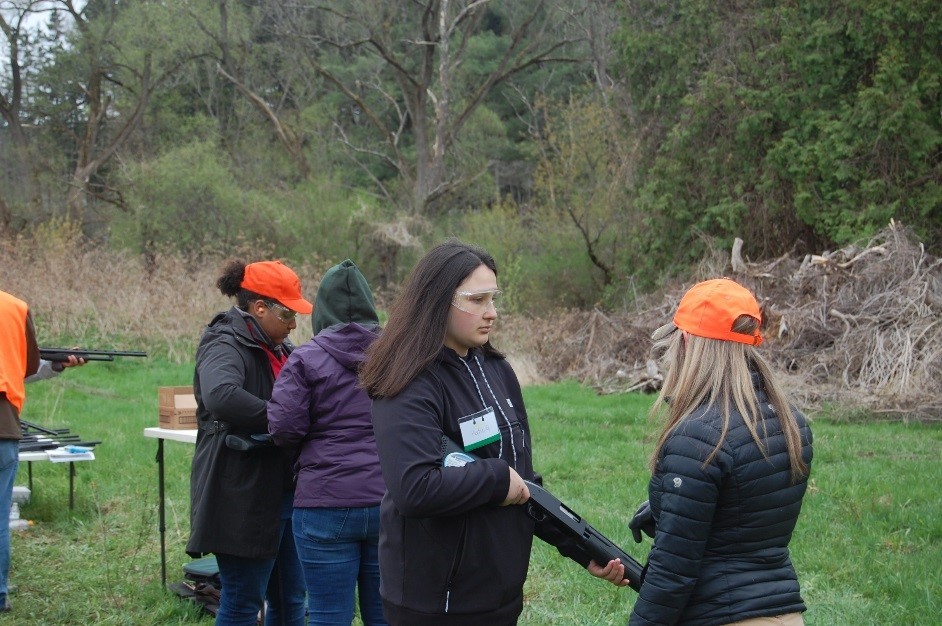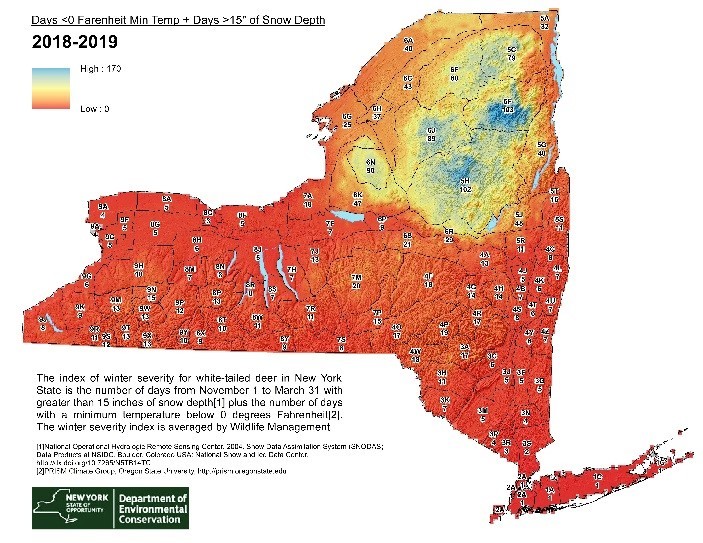Hunting and Trapping Newsletter
The New York State Department of Environmental Conservation sent this bulletin on 05/08/2019 12:34 PM EDT |
| DEC Delivers - Information to keep you connected and informed from the NYS Department of Environmental Conservation |
| Share or view as a web page || Update preferences or unsubscribe |
Hunting and Trapping Newsletter |
Good Luck to New York Archers at National CompetitionDEC wishes good luck to all the New York archers competing in two tournaments taking place May 9th-11th in Louisville, KY.
Sixty-eight students from eight schools will compete at the National NASP®/IBO (International Bowhunting Organization) 3D Challenge. These students qualified for the national tournament by competing in a virtual tournament, held at local schools. In a 3D tournament, bullseyes are replaced by foam replicas of game animals at distances varying between 10-15 meters. This is the first year that New York held a NASP® / IBO 3D Challenge State Tournament. The NASP® Eastern National Competition draws more than 14,000 archers annually from across the country. Those who succeed at the National Tournament in either the bullseye or 3D competitions qualify to compete at the World Championships, which will be held in Nashville, Tennessee in July. Caption on top photo: At their first time competing at the live state tournament, Arkport Elementary School won first place in the Elementary Division and will be heading to Nationals. Caption on bottom photo: An archer takes aim at NASP®/IBO 3D targets during a practice shoot. DEC Hosts Hunting 101 Workshop for College Students
DEC recently hosted a Hunting 101 workshop at Reynolds Game Farm in Ithaca, NY. The purpose of the workshop was to teach college students without any previous hunting experience the basics of hunting, to highlight the broader benefits of hunting, and to inspire students to adopt positive hunting-related attitudes and behaviors. Workshop participants learned about the role of hunting in wildlife management, hunting ethics, hunting methods, how to look for game sign, the basics of field dressing and game care, the benefits of eating and cooking wild game, and the basics of firearm safety and marksmanship. The workshop included instructors from the Bureau of Wildlife, volunteer instructors from DEC’s Hunter Education Program, and staff from Cornell Cooperative Extension. Participants’ impressions of the workshop and attitudes about hunting are being evaluated by Cornell University’s Center for Conservation Social Sciences as part of a national project coordinated by North Carolina State University. The goal of the national project is to evaluate the short and long-term efficacy of hunter recruitment, retention and reactivation programs specifically designed for college students. After the workshop, most participants indicated they are interested in going on to take a DEC Hunter Education course, the first step to becoming a licensed hunter. This was a significant increase from the number that indicated they would take a hunter education course prior to the workshop. Most Deer Survived Harsh 2018-19 Winter Conditions
Seemingly, most deer pulled through despite some mortality reports. Hopefully this winter serves as a reminder to the importance of managing deer herds and habitats for a sustainable future. Cutting brush, opening the canopy, and removing adult does when necessary facilitates healthy deer populations. Consider ways you can improve habitat quality through forest management and creation of young forest to better equip deer to withstand New York’s dynamic winters. Deer Management in Urban & Suburban New York
Because deer in developed areas are occupying and using many small private parcels with different landowners, widespread resident support and participation are usually necessary for effective deer management. In some communities, unfamiliarity with deer biology and discomfort with population reduction methods hinder and delay the development of management programs. Expense can also be a significant obstacle. Due to the nature of biological systems, reducing deer populations is necessary for long-term, community-wide reduction of deer-related impacts (deer-vehicle collisions, overbrowsing forests, damage to landscape plantings). Successful programs include hunting, culling, or both. Continued research on fertility control methods may produce additional useful options in the future. Actions that are taken to reduce deer populations must be maintained, or the problems will quickly return. With guidance and assistance from DEC biologists, many communities are finding ways to address their problems with overabundant deer, but it's important to recognize at the outset that urban/suburban deer management is a complicated process requiring a long-term commitment. Communities and individuals interested in developing a deer management program can find DEC’s Community Deer Management Guide and other useful resources and contact information on DEC's website.
|

 Sixty students from 12 different schools will represent New York at the NASP® (National Archery in the Schools Program) Eastern National Bullseye competition. These students qualified for the national tournament by competing in the state tournament held on March 15th in Syracuse.
Sixty students from 12 different schools will represent New York at the NASP® (National Archery in the Schools Program) Eastern National Bullseye competition. These students qualified for the national tournament by competing in the state tournament held on March 15th in Syracuse.

 For most, this past winter didn’t appear overly harsh for whitetail deer. Several mid-winter thaws reduced snow depths, and overall temperatures were slightly more moderate than prior winters. The Winter Severity Index (WSI) map confirms these assertions. WSI is calculated by adding the number of days with a snow depth of at least 15’’ to the number of days when the minimum temperature was 0°F or below. However, there are many other factors that play a part in a whitetail’s ability to withstand winter conditions. Here are some reasons why this past winter may have proven a bit harsher than indicated by the WSI:
For most, this past winter didn’t appear overly harsh for whitetail deer. Several mid-winter thaws reduced snow depths, and overall temperatures were slightly more moderate than prior winters. The Winter Severity Index (WSI) map confirms these assertions. WSI is calculated by adding the number of days with a snow depth of at least 15’’ to the number of days when the minimum temperature was 0°F or below. However, there are many other factors that play a part in a whitetail’s ability to withstand winter conditions. Here are some reasons why this past winter may have proven a bit harsher than indicated by the WSI: